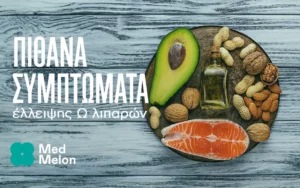Scientific Names of Lemon Thyme:
Thymus pulegioides ‘Archers Gold’; T. pulegioides ‘Bertram Anderson’; T. pulegioides ‘Aureus’ and T. pulegioides ‘Golden Dwarf’; T. pulegioides ‘Elliott’s Gold’ and T. pulegioides ‘Lemon King’. [Fam. Lamiaceae]
Forms:
Aqueous extract of lemon thyme leaves; pure essential oil of lemon thyme leaves
Traditional Usage:
– Anti-aging
– Antibacterial
– Antifungal
– Antioxidant
– Antiseptic
– Breathing Disorders
– Bronchitis
– Carminative
– Catarrh (upper respiratory mucous)
– Cellular Regeneration
– Cleansing
– Cough
– Cold
– Cramps (Digestive)
– Culinary Herb
– Deodorant
– Detoxification
– Digestive Disorders
– Disinfectant (externally)
– Diuretic
– Expectorant
– Flatulence
– Flu
– Gastrointestinal Disorders
– Lowering Cholesterol
– Mouthwash
– Nervous Disorders
– Poultice
– Spasms (externally)
– Stomachaches
– Urinary Disinfectant
– Vascular Disorders
– Vermifuge
– Whooping Cough
Overview:
Lemon thyme, T. pulegioides [Fam. Lamiaceae], is a perennial native to Europe and can be used similarly to common thyme, Thymus vulgaris L. In a recent study, Thymus pulegioides L. with lemon scent was found to form the major part of plants growing wild in all of 10 investigated localities during 1995-1997. Thyme was traditionally used as a medicine for treating symptoms of bronchitis, whooping cough and catarrh (mucous) of the upper respiratory tract. Thyme was also grown in monastery gardens in France, Spain and Italy during the Middle Ages for use as a cough remedy, digestive aid and treatment for intestinal parasites. The German Commission E also lists thyme leaves and oil for treating poor digestion. In European folk tradition, thyme leaf tea was also used for nervous disorders. Because essential oils are very toxic and irritating to skin when applied directly, it is important to dilute thyme oil for external use. However, pure thyme oil is often used as a natural preservative for medicinal and culinary oil blends, especially for encapsulated fish oil blends because of its antiseptic and antioxidant properties. New studies on a monoterpene found in thyme oil called limonene (found more abundantly in citrus rinds) show that it very effectively prevents individuals from developing abnormal growths on their skin (when taken internally). Limonene also has demonstrated prevention efficacy in preclinical models of breast and colon abnormal growths. Limonene has chemopreventive activity against rodent mammary, skin, liver, lung and upper stomach abnormal growths. Limonene also has chemotherapeutic activity against rodent mammary and pancreatic abnormal growths and is under evaluation in Phase I clinical trials with humans. Geraniol also has in vivo activity against abnormal white blood cells. Monoterpenes block cholesterol production within the body, which prevents excess estrogen formation and related stimulation of abnormal cell division.
Active Ingredients:
Lemon Thyme (Thymus pulegioides L.) leaves and oil with lemon and carvacrol odor contain: The main components of the citral-geraniol chemotype of lemon-scented essential oil are the following (%): geraniol (14.9-30. 8), geranial (trans-citral, 9.7-19.7), beta-caryophylene (6.0-11.4), nerol (4.1-11.8), and neral (cis-citral, 0.1-9.5). The essential oil of carvacrol chemotypes contains more compounds that are characteristic of the thyme genus (%): carvacrol (16.0-22.2), beta-bisabolene (11.1-20.2), beta-caryophyllene (11.1-19.1), gamma-terpinene (5.8-16.2), p-cimene (5.5-10.4), thymol (3.3-9.8), and carvacrol methyl ether (5.6-8.6). The correlation between the odor and composition of the essential oil can help the users of wild thyme to choose the necessary chemotype for their purposes. For comparison purposes, common thyme contains the same constituent with different percentages: 1-2.5% essential oil with thymol (30-70%) and carvacrol (3-15%) as the main components. Other monoterpenes include limonene, p-cymene, gamma terpinene and geraniol. There are also many tannins, flavonoids and triterpenes in the leaves.
Suggested Amount:
Thyme leaves can be taken as a tea with the recommended dosage of a cold or moderately hot cup of tea taken several times a day or as required. An infusion is made using 1.5-2g (one teaspoonful) of the coarsely cut or powdered leaves. Boiling water (ca. 150ml) is poured over this and extracted for 10 minutes. For poultices, a 5% infusion is recommended. As a fluid extract or tincture, the dosage should correspond to not less than 0.03% phenols calculated as thymol (1.5-2g).
Drug Interactions:
None known.
Contraindications:
It is safe to use thyme as a seasoning during pregnancy, but strong medicinal doses should be avoided if there is any possibility that you are pregnant.
Side Effects:
None known.
References:
Crowell PL. 1999. Prevention and therapy of cancer by dietary monoterpenes. J Nutr. 1999 Mar; 129(3): 775S-778S. Review.
Duke, J. 1997: The Green Pharmacy, The Ultimate Compendium of Natural Remedies from the World’s Foremost Authority on Healing and Herbs. pp. 13-14; 36; 53; 106-107; 289; 494. Rodale Press.
Inouye S, Takizawa T, Yamaguchi H. 2001. Antibacterial activity of essential oils and their major constituents against respiratory tract pathogens by gaseous contact. J Antimicrob Chemother. 2001 May; 47(5): 565-73.
Mockute D, Bernotiene G. 1999. The main citral-geraniol and carvacrol chemotypes of the essential oil of Thymus pulegioides L. growing wild in vilnius district (Lithuania).
J Agric Food Chem. 1999 Sep; 47(9): 3787-90.
Wichtl M (ed). 1994. Thymi herba – Thyme (English translation by Norman Grainger Bisset). In Herbal Drugs and Phyto-pharmaceuticals. CRC Press, Stuttgart, pp. 493-495.




